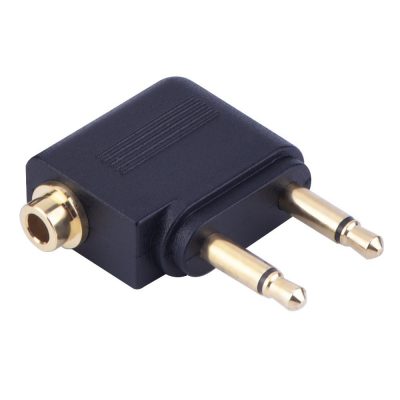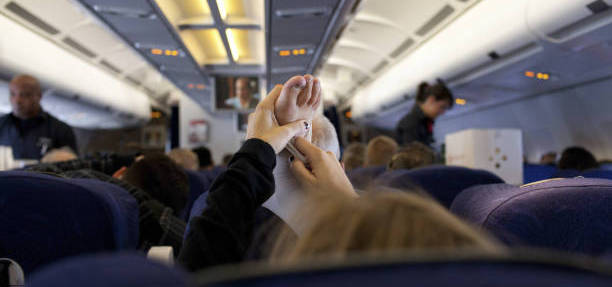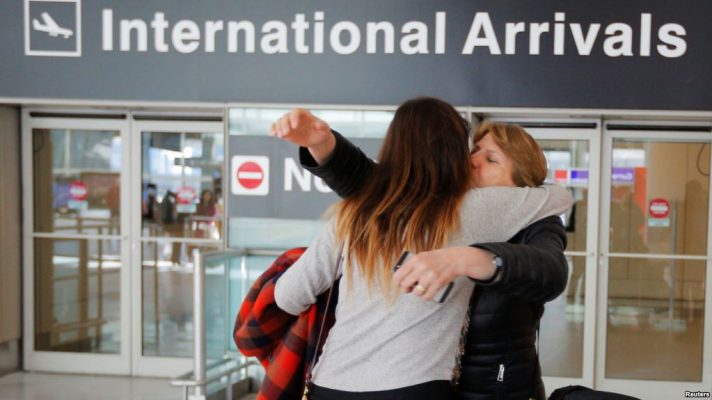When I took my first long-haul flight, I thought to myself ‘how hard can it be? I’ll just sleep’. I was wrong. Surviving long flights is not easy. Since then, I have found there are a number of things I can do to make long flights a lot less tiring and more comfortable, for what they are, so that when I arrive, I am not a broken traveler.
If you are going on a trip soon, I hope that my own solutions to surviving long-haul flights can help you feel a little more comfortable, a lot less tired and more healthy for when you reach your travel destination or your loved ones at the other end.
It goes without saying, that long flights are taxing experiences, especially when they are overseas and run through different time zones. I have recently gone through a number of extensive travels from legs such as seeing family in Australia, to family and Europe, all via China as it was the quickest and cheapest ticket I could afford. That was 20 hours of flying over two separate flights, with a short stopover in a chaotic Chinese airport.
During those flights, I often check to see how long until the plane arrives at the destination. And when I check that screen, hoping it is only an hour left before I arrive, it tells me I have another five hours left of a stiff neck and cramped legs. God help me. After doing a little more research on passenger techniques, I tried a few methods and have eventually arrived at the point where I can fly a little more comfortable, sleep a little better, and arrive at the airport after a long-haul flight a little more fresher than I used to.
Why is it important to prepare for long flights?
Long-haul flights, especially when they are overseas, are important to prepare for. A lot of time and money has gone into the research of your tickets, the paying of the tickets, hotel fees, transfers, visas, and everything else that comes along with a packed suitcase. But it’s not just long flights, in fact, all flights, even those short little domestic flights should involve some level of preparation. After all, it’s better to have a little preparation than none at all, right. That’s why I started my writings on The Prepping Guide, a life approach to the scout’s honor of ‘be prepared’.
When you have a flight overseas, there’s a chance that you have to quickly find your next plane in a large airport. One mistake and you could possibly end up missing your flight, leaving you trapped. It gets a lot worse when you’re in a foreign country don’t have access to a phone network (and international roaming is ludicrously expensive). And when you arrive after your long flight, it’s not over, you still have to make sure you have filled out the right entry card, have your passport ready, wait for your bags at the carousel and pass customs before you get to find your friends, family, or a taxi to a hotel bed for the night. There’s a lot going on here, and it’s all while you have lost sleep after an uncomfortable flight. This is why I prepare for flights, there are just too many things that can go wrong.
Being comfortable while flying is important, but there are also some other priorities you need to prepare for travelling, such as making sure your flight tickets are printed, you have the rights visas (if necessary), have any local currency for stopovers or taxis, and you have sealed your checked in luggage, or have a flight bag. These are the more pressing concerns for your safety, and to make sure you actually get on the plane. Once you have those, all you need to worry about is preparing for a comfortable flight ahead.
How to survive a long-haul flight
I am always excited about travel, just like most people are. Especially if it’s to a new place or to see family. And a lot of the time, the airport is significant in the actualization of that excitement. But whether you like traveling or not, the excitement for anyone wears off once you are four hours thick in the middle of an uncomfortable long flight. Here are 10 tips to make that long-haul flight a little easier.
1. Flight upgrade
I could not have written this post on flying in comfort without including the mention of getting a flight upgrade. Ultimately, it’s the best solution to having a comfortable flight, given though, it’s not the easiest. I have only ever had a flight upgrade once on a Malaysia Airlines flight and the only reason I got it was through loyalty points I had earned through my bank. Travel hacking is quite a regular thing that a lot of flight hackers go through every day, signing up with new banks, credit cards, and financial products just so that they can travel the world without having to spend much money at all.
Flight upgrades might seem like an urban myth, but they do happen. Of course, for my flight upgrade, it was more about exchanging loyalty to a financial institution than it was luck. But for some, upgrades have been through pure luck of the draw. There are airlines that have free upgrades available to certain passengers that might be deserving on compassionate grounds, such as if they had a dead relative and the check-in attendant makes a personal judgment as to whether that passenger deserves an upgrade.
While there are other considerations out there that might up your chances of being boosted into business class, such as dressing nicely, being nice to the check-in attendant and being early for your flight, there are also auctions on first class tickets. Some airlines run auctions where you are able to bid on first-class tickets that have been left open, rather than paying their full price. Although, this is only with certain airlines and not yet an across-the-board system.
2. Emergency exit seating
I refer to this as economy class luxury seating. It is the seating aisle that is next to the emergency exits. In order to get them, you can try your luck by asking the check-in attendant, or you might have them as a choice on your online booking system. The only difference with these is that you have a briefing by cabin crew as to what to do in an emergency. Basically, they are a much more spacious seating area as there are no seats in front, so if you have problems with flying and you want to fly in comfort, this is one of your best bets to get more leg room and stretch space for a long flight.
3. Choose a comfortable airline to fly with
Another way to ensure you have a comfortable flight is to choose to fly with a carrier that has a good seating space for its economy class. While you might think all planes are the same, there are some carriers that are greedy on their costs and try to fit more seats in their plane designs, sacrificing on width and legroom. The difference in seat sizes when you fly in some of these is very noticeable, especially if they are plans serving long-haul flights. Some of the flights I have experienced have been with carriers that have had my knees stuck into the back of someone else’s seat (I’m a relatively tall person at 188cm). Yet, some flights I have been on, for the same price, have left my knees untouched by the tray table or seat pocket of the airplane.
When choosing what airline is the most comfortable, the team over at Seat Guru have made a free-to-use long-haul economy comparison chart which ranks airlines based on seat width and seat pitch (the distance between two rows of seats). Some of the best common airlines with the most spacious seats are WestJet, United, American Airlines, Hawaiian Airlines, Asiana and El Al. When booking your next flight and doing a comparison of which flight to choose, make sure you look at the seat comparison chart as sometimes one ticket that is an extra $10 could add an extra two inches onto your seat width or seat pitch.
4. Charge your devices
Most airlines allow you to use your devices during a flight, just not during takeoff or landing. If you are someone that reads a an ebook, watches movies on your tablet or phone, or you are doing work on your laptop, make sure you have those devices fully charged ahead of your flight as well as any backup batteries you might have.
For myself, if I am not attracted by one of the various movies the in-flight entertainment system has on offer, I resort to my Kindle and make sure that I have a new book or two loaded prior to the flight. I use a specific type of Kindle that comes with a backlight so that I can read it without having the bright overhead light on. While it seems like overkill not having to use an overhead light, it spares the light also shining onto my neighboring passenger, which during a long-haul flight, can help.
5. Comfortable travel pillows do work

I have been through a soiree of travel pillows and neck pillows, and while some are not as good as others they all help with finding that comfortable position when flying and save you from developing neck-pain as a result of your long flight.
After making my way through a number of reviews on neck pillows and travel pillows I ended up going with the oversized option from Travelrest called the Ultimate Travel Pillow. It is essentially a sword-like inflatable travel pillow that sits comfortably on the shoulder and runs down the front of the body giving your head a firm cushion to rest on. Personally, I don’t really get a good sleep with neck pillows as I can never manage to get them to support my head, and I prefer something that I can rest my cheek on while flying. Travelrest’s pillow is also inflatable, so it’s something I can easily roll up and put away in my bag when I am not flying or when I am walking around an airport terminal looking for food. They are quite an affordable pillow in comparison to a lot of other options and are available on Amazon.
6. Get an airline adapter for your headphones

If you are a regular traveler, or you are just doing a few long-haul flights, your own set of headphones are a must-have. I have only just bought myself a new headset and prior to that, I was always using the airline’s headsets, which I can tell you come in all ranges of awful, with a plethora of technicalities. Some of those headsets only work if they aren’t fully plugged in, others only have one ear working, and most, if they do work, are as uncomfortable as a crown of thorns.
While there are expensive brands out there that, if you have the budget, I welcome you to shop for, it actually pays to look around at normal headsets that you find comfortable and get an eBoot Airline Flight Adapter. This adapter lets you use any earphones or headset in an airline plug for less than USD$10, rather than having to use the scratchy disposable headsets airlines offer. I use my own noise-canceling headset with this adapter which makes for great movies, as well as a way to keep out any flying ambiance when I am trying to sleep.
7. Plan your time
Planning flying time is something I have always considered doing, but have never actually started doing up until a few months ago. Previously, I would just go off-the-bat and pass the time how I felt, sleep when I am tired and read or watch a movie when I am awake. Now I have changed that as I figure long flights are a constructive period where I am forced to read, rest and review.
I calculate my flights according to my normal pattern, if it is 10 am in the morning I am not going to sleep, no matter what I do, so I just read and watch movies. Depending on my schedule in the days prior to flying, I might start to try and sync my sleeping pattern to encourage more sleep on the plane and to be in sync with the local time for when I arrive. This might not suitable for you if you are one of those people that can’t sleep on a plane, then perhaps more rest prior to flying might be more beneficial.
Another thing I do is ask the attendant at what times the in-flight meals are brought out. While it is exciting to guess at the time of food by the smell in the cabin, it is even worse when you are asleep and the food has already made its rounds. As a preventative, if I am very tired on a flight, on certain airlines I will either tell the cabin crew that I still want my food and leave my tray table down, or I will leave a note on my tray table. Of course, if you are asleep during meal time, there is always the possibility of asking staff for food when you wake up.
8. Take care of your health
One of the most important things you can do to survive long-haul flights is to be healthy. What do I mean by being healthy? Simple. In the build-up to your flight, make sure you get as much daily movement in as possible, whether it be going for walks, exercise, or being out in the yard. This makes your body able to rest a lot easier during the flight and encourages more circulation in the body and will enable you to cope with time zone shifts and jetlag much easier.
During the flight, drink plenty of water. Electrolyte solutions are also a great idea as you don’t want to become completely diluted with water. A side benefit of drinking lots of water is that it causes you to go to the toilet more frequently. For myself, this is a big thing as I am able to sit for a 10-hour flight and just read and forget about that movement. Going to the toilet involves getting up and walking around, which is crucial during long-haul flights as it stretches the legs, encourages circulation throughout the body, gets you out of that cramped up position, and battles against things such as deep vein thrombosis (DVT) which is the formation of blood clots in veins and a common risk during long-haul flights.
Some other health tips for a long-haul flight include:
- Avoiding alcohol the night before the flight
- Avoiding diuretics such as caffeine
- If you suffer with swelling and circulation, consider wearing compression socks
- Avoid flying if you are sick
9. Massage the soreness away
I get soreness and stiffness after long flights. In fact, I think it is an issue that affects most travelers, even after shorter flights. Sitting for long periods, propped up in an uncomfortable chair is not natural for the body and is surprisingly taxing on your body. I find one of the most helpful things when traveling is activating the muscles in the body through stretching and massaging. There are lots of various light to rigorous stretches you can go through after a long flight, or during a stopover to stretch our those tense muscles and fix any soreness issues you may have.
Another thing I use, and always keep in my backpack whether I am traveling or not, is a small massage ball. Aside from the image on the right, the only way I can describe it is as a spiky massage ball. This is a very simple item under $1o that I use when I am sitting at the computer, or when I am in an airport waiting for my next flight. When I ordered these ones, they came in two different sizes, however, I only keep the small one in my backpack, and I take it on long-haul flights because it is small and takes up no space in my backpack. During a stopover, or when I would arrive and am in my hotel room, I would roll my feet over this ball for 10-15 minutes while standing, and most of the pain in my back and lower body would cease.
These massages balls can be used to address a number of pain-related issues that are caused by flying, especially from long-haul flights, and they can hit certain muscles in the body that are common pain areas such as the lower back, the shoulders, and the neck, just by rolling on them on the ground. For me, if I am using these on my neck or back, I will use them with a towel just to soften the impact they have on those muscles.
10. Avoid things that cause flying sickness or airsickness
Airsickness, also known as flying sickness, is something I have suffered with once or twice and I know enough people that have it to call it a regular sickness. For some, it’s something to expect during every flight they encounter. So what is airsickness? It is a type of motion sickness, similar to car sickness or when people get seasick. It is caused by the way we sense movement in what the body senses and the difference in movement as to what the eyes see. Airsickness is different to seasickness and car sickness as your eyes adjust to a completely still environment in the cabin which looks as if you are barely moving. But your inner ear, responsible for balance and gravity, is feeling a completely different sense in relation to the various levels of height you are traveling at.
The symptoms are quite noticeable, and can often involve queasiness, nausea, fatigue, chills, sweating, and vomiting. There is a list of issues that might make you more susceptible to airsicknesses, such as certain medications, alcohol, fatigue, emotions, and anxiety. If you do have any of these, it is a good idea to think about rescheduling a flight, or fixing these issues straight away before you fly.
How can you prevent airsickness? A lot of preparations involves general health advice, however, some things that you can do to avoid airsickness are:
- Eat a nutritious diet that is low in sodium and fatty foods.
- Do not to eat immediately before a flight, but make sure that you have plenty to eat in the leadup to your flight.
- Drink plenty of water before and during your flight
- Relieve anxieties you have about flying before you board, whether that be by meditation, or by turning on some of the nice in-flight music or an interesting movie just prior to take-off so as to get your mind away from any fear of flying
- If you have signs of airsickness such as sweating, open the vents and try to get fresh air
- Look out the window at a fixed point on the horizon
- Avoid reading
- Don’t put your head down, keep it level and in an unconstrained position
Enjoy the trip, it’s not every day you get to fly
Flying, despite its compact seating positions and long durations, is meant to be enjoyed. Boarding a flight with a positive attitude about what you are doing, where you are going and how you are lucky to afford to travel is a great way to ensure your flight is a positive and comfortable experience. Remember, when your flight gets uncomfortable or tiring, it is not forever, and you will soon be laying out straight in a bed with all of the space in the world, or running along a tropical beach somewhere on your well-earnt holiday.
I hope some of these tips for a long flight will help you in your next long-haul flight, whether it is travel abroad, or just a quick flight to your getaway destination or family.







